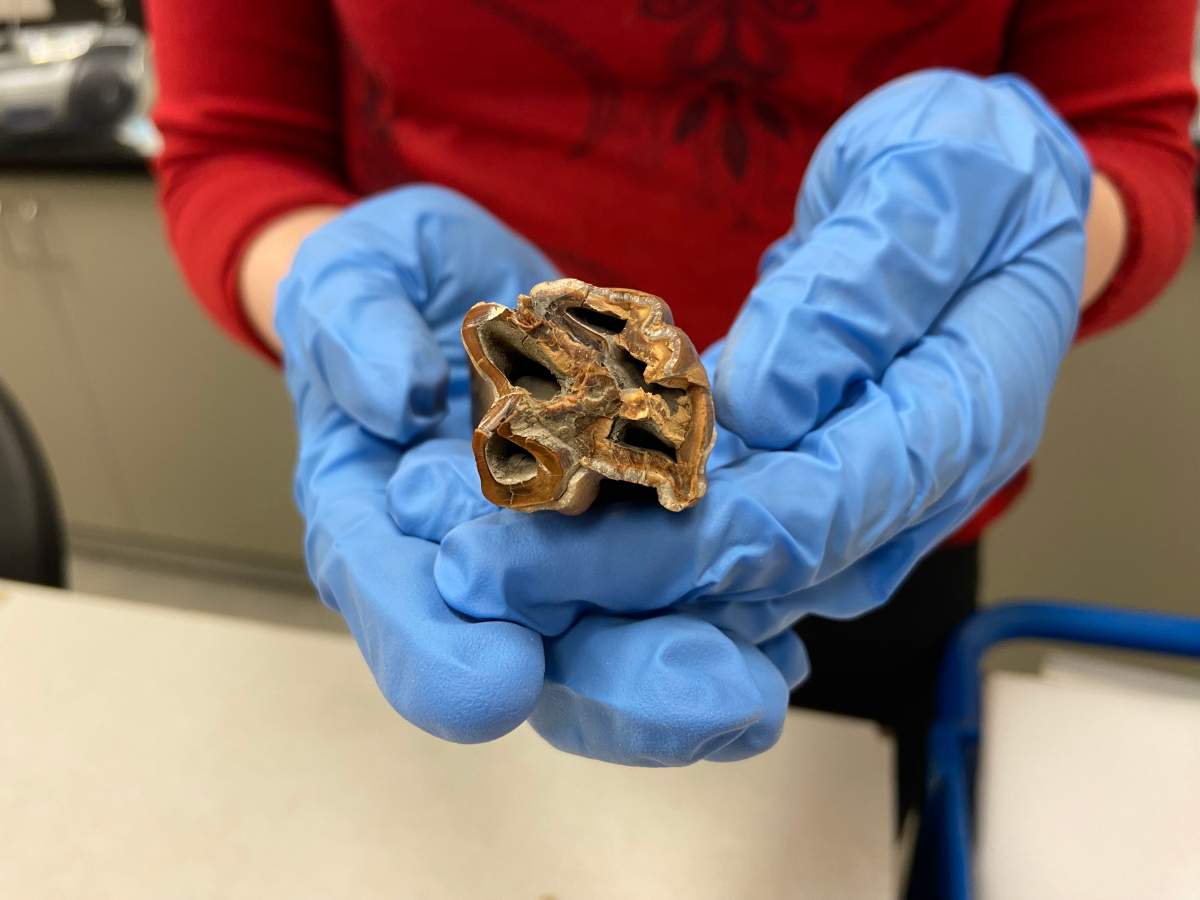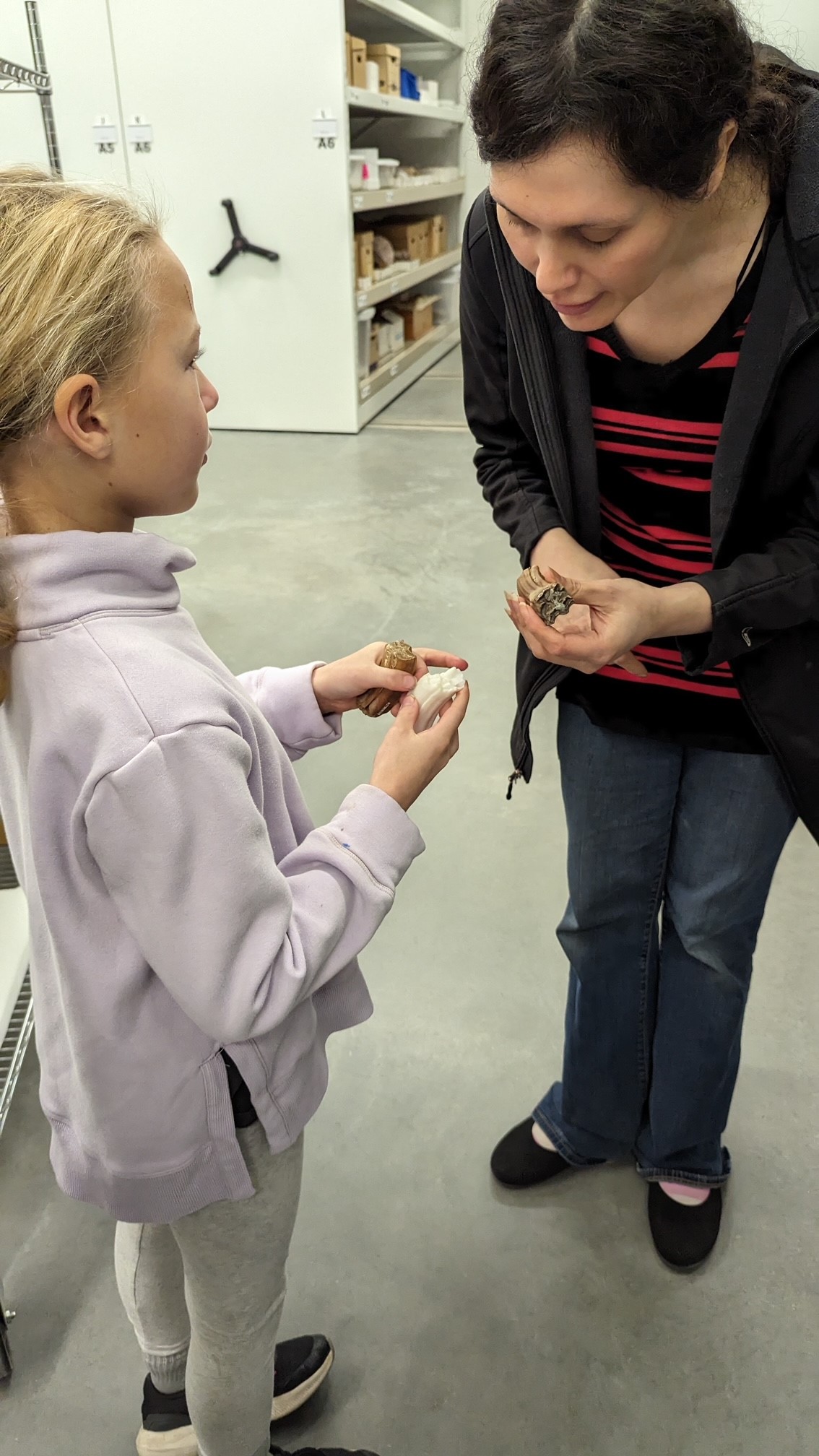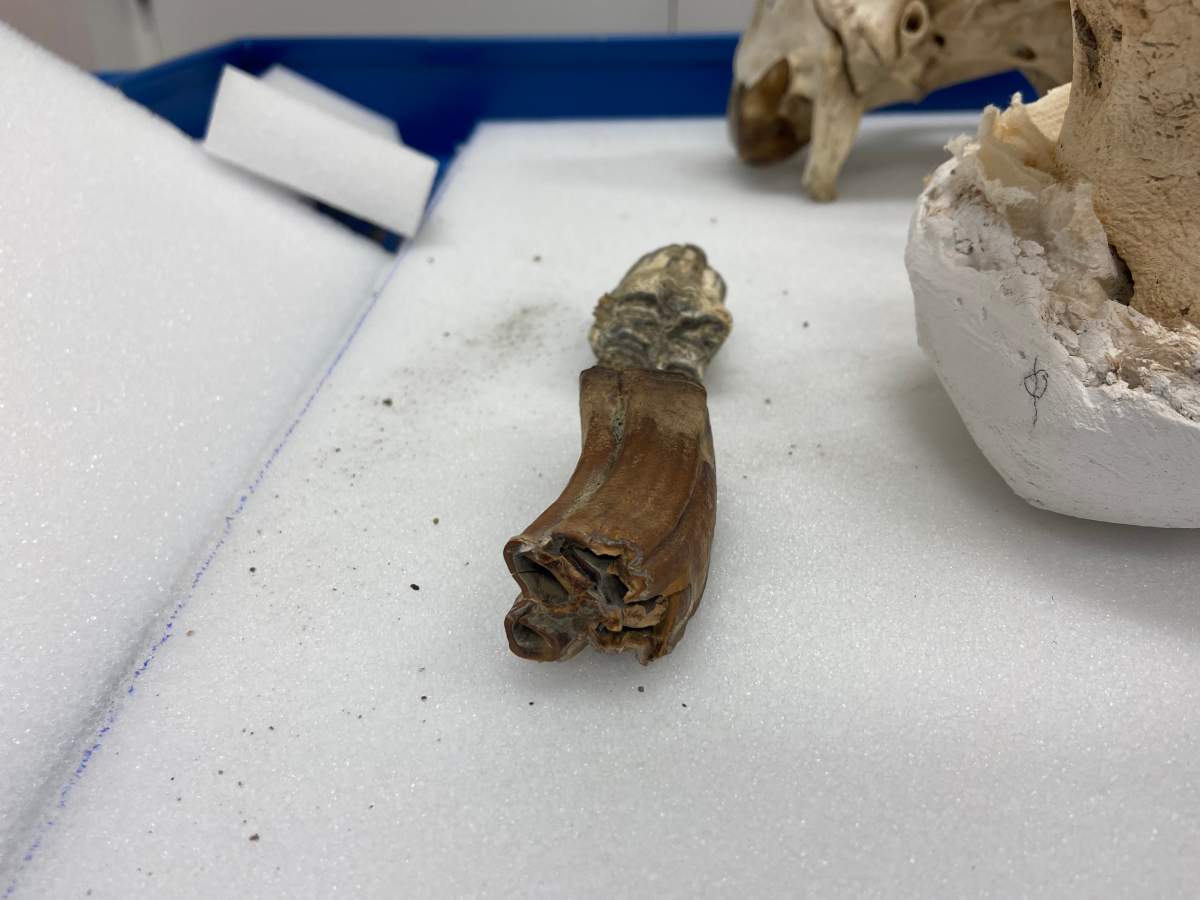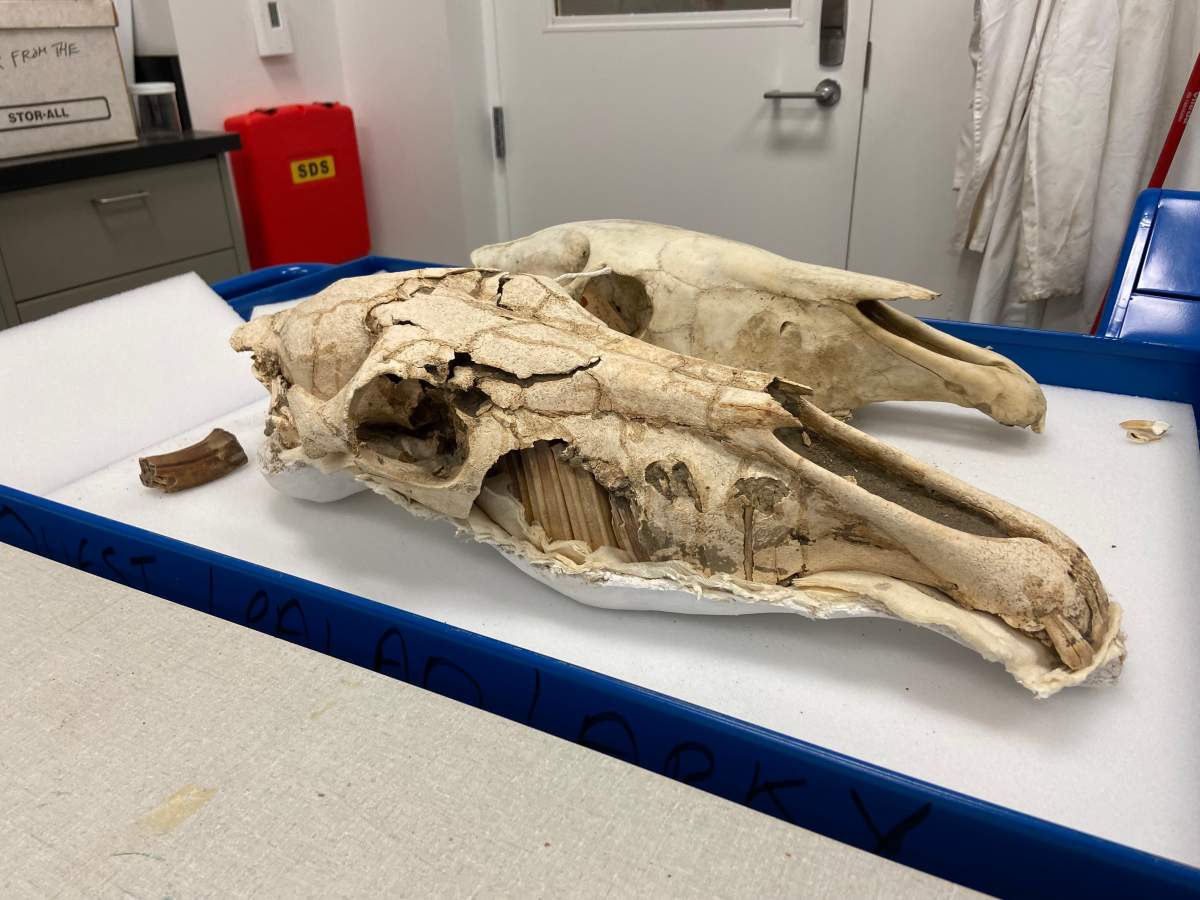Last year, Julian Caners was rushing to soccer practice with his dad when he accidentally found a fossil.

It happened while the nine-year-old from Edmonton while getting out of the car at Meridian Sports Park in Parkland County.
“I saw like a big rock right beside where we parked, so I went to pick it up and asked my dad if I could keep it,” Caners said.
“He said no, so I just snuck it into the car.”
His mom, Lisa Matthias, said Julian has a knack for finding fossils, but usually it’s things like petrified wood or unique-looking rocks.
“But when he brought it home from practice that day, my husband and I were like, ‘That looks like a horse tooth.’ It’s this huge three-inch tooth of some kind of old animal,” said Matthias. “I think that was probably one of the biggest fossils he’s found.
“He was pretty excited — it’s a really unique-looking thing.”
Luckily, Julian’s dad works at the Royal Alberta Museum and often sees artifacts. So, he gave the tooth to his colleague Dr. Christina Barron-Ortiz, curator of quaternary paleontology.
Dr. Barron-Ortiz studied ice age horse fossils, so she quickly knew what it was.

Get breaking National news
“I cut a small piece of the roots and send it off to a lab at the University of Ottawa,” said Barron-Ortiz.
The lab used radiocarbon dating; an analysis that can only find the age of things younger than 45,000 years old.
“This tooth is older than that, which is quite impressive,” she said.
Barron-Ortiz compared it to a similar ice age horse tooth that is two million years old.
She confirmed Julian’s find isn’t that old because of the tooth structure — but the ice age tooth still falls in the range of a million and 45,000 years old.
What’s more impressive, Julian found the horse tooth completely intact in a parking lot, that means the large tooth somehow survived a gravel crushing process.
“To have found something like that intact — that beautiful fossil in a parking lot — is pretty cool,” Matthias said.
Using sediment found on the tooth, the museum was able to source the rocks to a gravel pit near the sports park north of Stony Plain.
At this point they haven’t found any more fossils from the pit, but suspect the tooth might have been preserved in sediments from buried river valleys from ancient river systems.
Barron-Ortiz said an estimated 45 per cent of the museum’s big mammal fossils have come from gravel pits, which she explained are usually on ancient river systems — so fossils are usually scattered.
“It’s like looking for a needle in a haystack.”
The tooth is a significant find, as the discovery of ice age fossils in Parkland County is uncommon and it was so well preserved and sealed that researchers were able to extract collagen and now, they think they can find DNA.
“That information can allow us to understand the evolutionary history of horses, not only of this individual but also horses as a whole in Alberta and North America,” Barron-Ortiz said.
She explained this group of domestic horses and wild horses evolved in North America millions of years ago, then crossed the Bering land bridge to Asia and Europe.
“Eventually they went extinct here in North America as far as we know, they disappeared,” said Dr. Barron-Ortiz. “But, they survived in central Asia where they domesticated, and then they spread all across the world and eventually came back to North America.”
As a thanks for finding the fossil, the museum made Julian a 3D replica that he can hold on to as a souvenir.
“I can just look at it whenever I want,” Caners said.












Comments